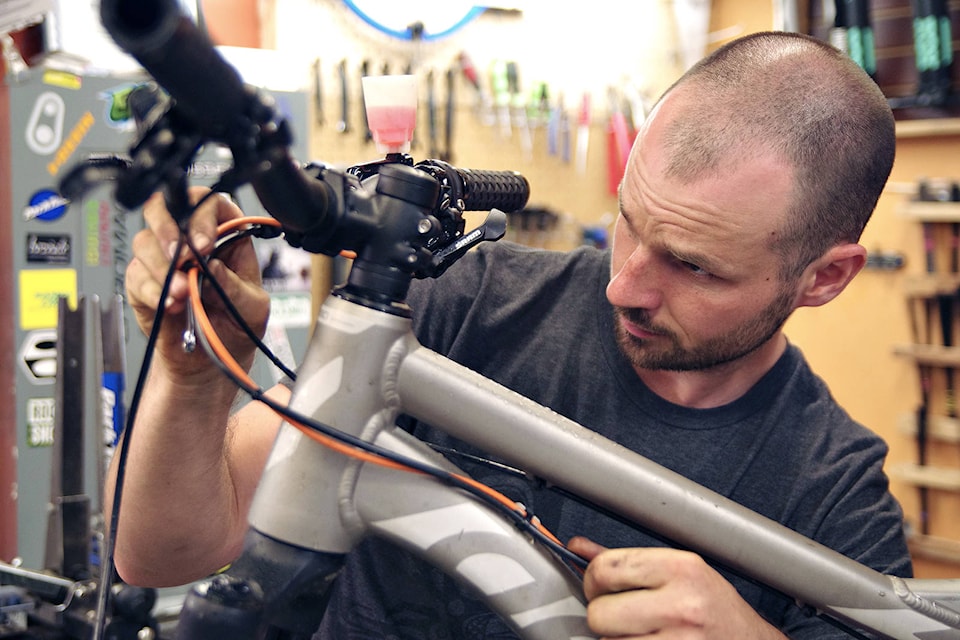Cycling to work is great exercise and environmentally friendly, but following a few safety tips is key to staying healthy while riding.
Bike to Work Week started Monday and continues through Sunday (June 4) in Nanaimo.
One of the best ways to make that cycle commute safely and avoid collisions with vehicles is by being visible to motorists.
Kebble Sheaff, owner of Arrowsmith Bikes, recommends cyclists keep bike lights turned on, wear bright colours or reflective material – especially on feet and knees, which move while pedalling a bike – and contrasting clothing, such as neon yellow, green or orange against black. Flashing lights, motion and bright colours will catch a driver’s peripheral vision.
“This means, ‘that’s a human and I shouldn’t run it over,’ when you see that,” Sheaff said.
Cycling clothing and bicycle finishes and decals made of reflective material that glows when hit by car lights, provide additional safety at night when there is no sunlight to cause bright clothing colours to fluoresce.
“We had a few jackets where the whole entire jacket lights up when you shine a light up on it at night,” Sheaff said.
Every bicycle should have bright, flashing lights turned on day or night. Eighty per cent of all bicycle accidents happen in the daytime when most people ride. Daytime running lights can cut collisions between bikes and cars by up to 33 per cent.
Helmets should always be worn while riding to protect against head injuries when crashes do occur and many municipalities, Nanaimo included, have bylaws requiring cyclists to wear helmets.
Being able to see is as important as being seen. Often sand and other debris on roads is thrown up by passing vehicles. Wearing safety glasses or sunglasses prevents grit from getting into eyes, which can be painful and dangerous if a rider’s vision becomes impaired.
“It’s funny, though. A lot of people don’t ride with glasses,” Sheaff said. “Mountain bikers especially don’t. I think people are becoming more aware and are starting to now – same as having a rear light on all the time while your riding. It’s not just a nighttime thing.”
Tyler Walker, bicycle mechanic with Coal City Cycles, recommends fenders to keep debris from flying into cyclists’ faces.
“Full-wrap fenders … that’s going to prevent a lot of stuff from getting in your eyes and it’s definitely one of the best investments for commuting in the wet,” Walker said.
He also recommends cyclists take up mountain biking or cyclocross, which teaches riders how to control bikes in adverse situations.
“If you can handle your bike in sketchy or slippery situations, then when you’re in traffic it’s a lot easier to avoid potholes,” he said.
Cyclists should keep their heads on a swivel and eyes and ears open when biking in traffic.
“Aside from your gear, having eyes in the back of your head is very important, not wearing any earbuds or anything like that and keeping your ears and eyes open,” Walker said. “I really like making a right shoulder check, making eye contact with drivers and making sure they see me, so they don’t run me over.”
photos@nanaimobulletin.com
